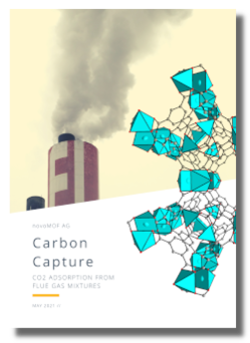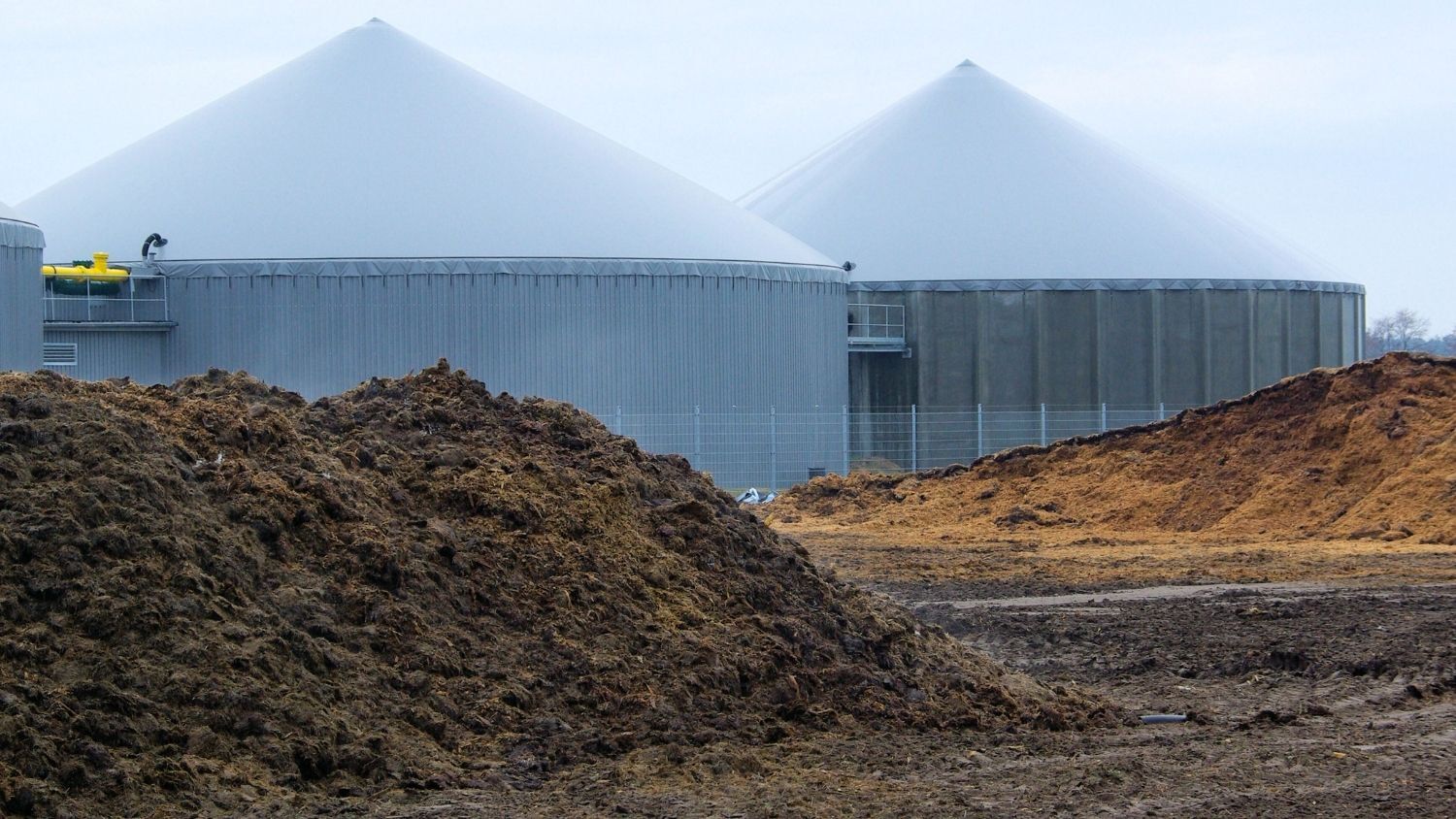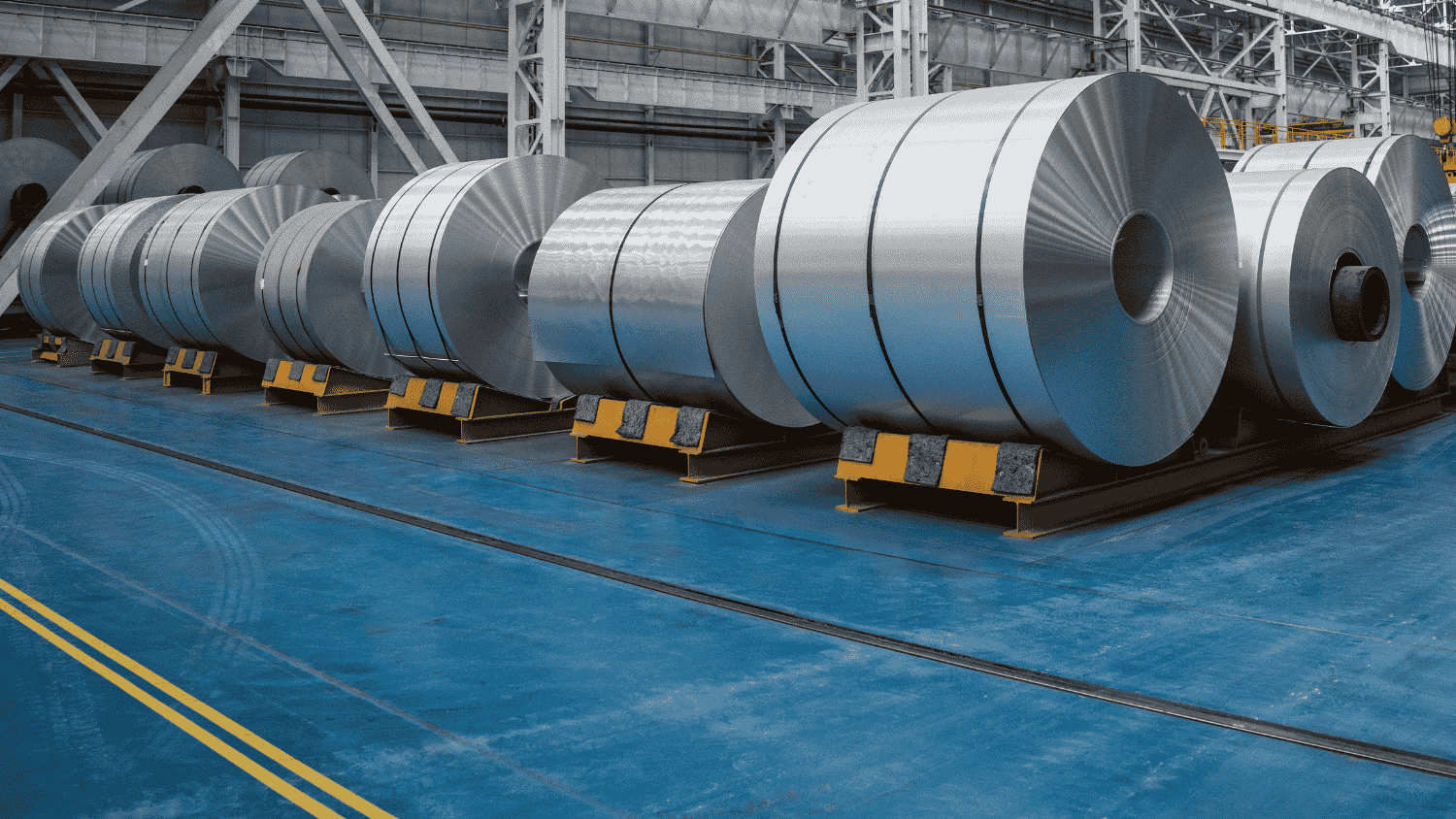Global concerns have been raised due to increasing emissions of greenhouse gases in the last few decades. Carbon capture and storage are considered one of the most promising strategies to reduce pollutant levels in the atmosphere. However, several factors are holding up the utilization of carbon capture technologies. The high energy requirement of current technologies is one of the most critical limiting factors.
Among the technologies for CO2 capture, we can find the use of amines and porous adsorbents. Amines are corrosive by nature and require high energy quantities for their regeneration, making their implementation difficult at a large scale. Porous adsorbent materials such as zeolites and activated carbon were raised as an alternative to amines; however, they also need high energy inputs for regeneration and only offer moderate CO2 uptake.
New porous materials for CO2 capture
Metal-Organic Frameworks (MOFs) are relatively new porous materials used as alternative adsorbents to capture and separate gases in different applications. MOFs have shown a remarkable capacity for the storage of small molecules, including CO2. Nevertheless, the strong adsorption interactions of MOFs with guest molecules lead to a difficult regeneration process. Therefore, there is a need to reduce the regeneration energy requirement of the process to allow MOFs' widespread application.
MOFs offer several advantages for their application in adsorption processes due to their highly ordered structures. Some of the most appealing characteristics of MOFs include:
- Easy fabrication
- Physical and chemical properties manipulation during the fabrication process
- Chemical and thermal stability
Want to know more? Download our case study on Carbon Capture!
Using the right adsorption-desorption process
The thermal Swing Adsorption (TSA) process is used for the regeneration step of adsorbent materials after the gas capture step. However, this is not a suitable process for MOFs regeneration. MOFs are well known to be thermal isolators making a temperature swing process inefficient.
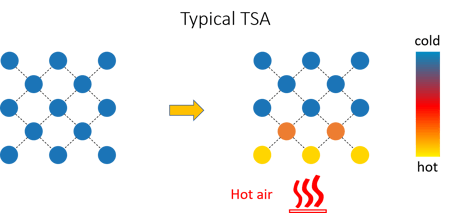 Therefore, modified TSA processes have been used in previous attempts to reduce energy requirements. Alternative TSA processes include the use of electricity, light, and magnetic fields.
Therefore, modified TSA processes have been used in previous attempts to reduce energy requirements. Alternative TSA processes include the use of electricity, light, and magnetic fields.
Magnetic induction heating is a process that can deliver heat remotely to magnetic particles through a nonmagnetic insulating material. Such a heating process suggests a suitable method for applications where insulating MOFs particles are used. This method is denominated as magnetic induction swing adsorption (MISA) process.
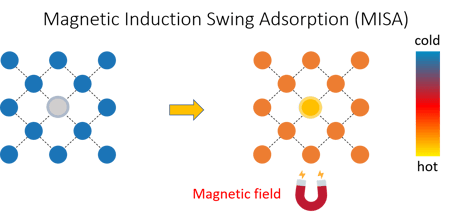 The implementation of a MISA process was recently reported for the regeneration of a magnetic framework composite containing an Mg-MOF and MgFe2O4 nanoparticles used for CO2 adsorption. In this study, the authors assessed the suitability of the nanocomposite under typical post-combustion conditions of flue gas streams of power plants and industrial processes.
The implementation of a MISA process was recently reported for the regeneration of a magnetic framework composite containing an Mg-MOF and MgFe2O4 nanoparticles used for CO2 adsorption. In this study, the authors assessed the suitability of the nanocomposite under typical post-combustion conditions of flue gas streams of power plants and industrial processes.
The results showed a high working capacity of the magnetic composite of 4.03 mmol/g (15.1 wt%) at an applied magnetic field of 21 mT corresponding to 145 °C, which is slightly lower than the obtained for the bare Mg-MOF at a higher temperature of 200 °C in a TSA process (17.6 wt%). The release experiments yield an average of 85% CO2 release efficiency per cycle. A MISA process leads to an even heat distribution in the composite, resulting in low regeneration times between 7-11 min. The productivity of adsorbent materials is critical for real applications. The shorter the regeneration time, the higher the system's productivity, which can be translated as a larger production capacity.
What about energy efficiency?
The MOF-based adsorption system can deliver a low energy cost of 1.26 MJ/kg CO2, which is almost one half the energy cost reported for commercially available materials (like piperazine, monoethanolamine, and activated carbon). The MOF-based composite achieved productivity of 3.13 kg CO2/h kg/Adsorbent. The results obtained in the study are the lowest energy requirements reported to this day for porous solid materials evaluated for post-combustion carbon capture and storage.
“MOF-based adsorption system can deliver a low energy cost of 1.26 MJ/kg CO2, almost half of the energy cost reported for commercially available materials”
The implementation of the MISA process is critical to achieving a more efficient and homogeneous heating process. To this end MOFs offer the advantages of easy incorporation of magnetic particles for the fabrication of magnetic composites using simple methods. Additional use of polymers can be incorporated to the composite to enhance water sensitivity, leading to more a stable material for real applications in power plants and industrial processes.
Head over to our success stories, if youd' like to have more information on specific processes. You can find detailed case study on carbon capture here. Or, if you have a gas capture process and don't know which MOF is best for you, contact us to find out more!

